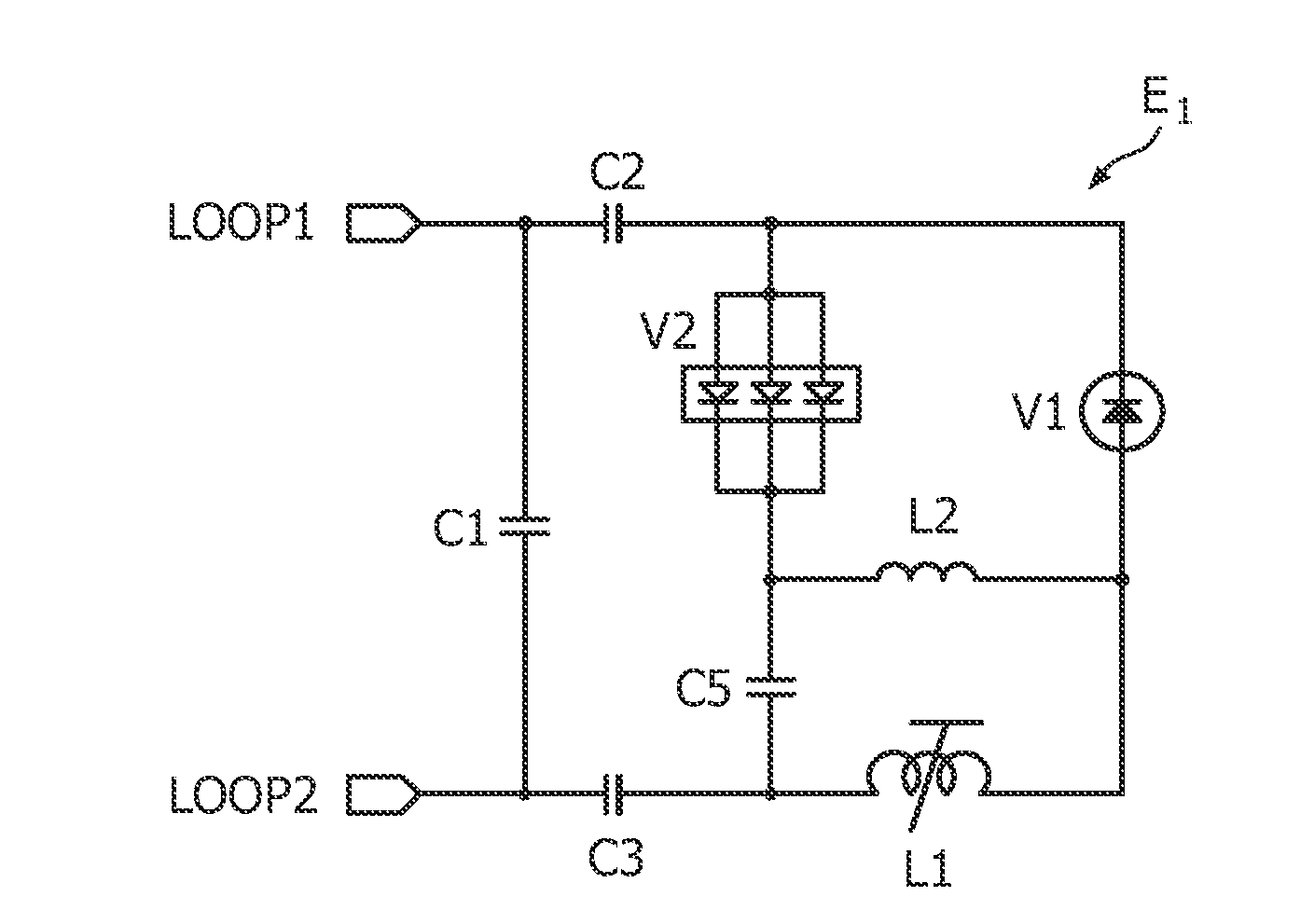Detuning circuit and detuning method for an MRI system
a technology of magnetic resonance imaging and detuning circuit, which is applied in the field of magnetic resonance imaging system, can solve the problems of degrading image quality, unstable biasing current, and inability to maintain the pin diode series resistance low enough, so as to facilitate robust forward biasing of the pin diode and fast reverse recovery time
- Summary
- Abstract
- Description
- Claims
- Application Information
AI Technical Summary
Benefits of technology
Problems solved by technology
Method used
Image
Examples
Embodiment Construction
[0031]With reference to FIG. 1, a magnetic resonance imaging apparatus includes a main magnetic field generator A for establishing a temporally constant, main magnetic field B0 through an examination region. Gradient magnetic field coils B selectively produce magnetic field gradients transversely across the main magnetic field of the imaging region. An RF transmitter coil C, selectively transmits radio frequency resonance excitation and manipulation pulses during a transmit portion of each transmit / receive cycle. These high power excitation and manipulation pulses excite magnetic resonance in the nuclei of the subject disposed in the imaging region. The resonating nuclei generate radio frequency signals of a frequency which is determined by the strength of the magnetic field and other variables such as the specific nuclei targeted. A magnetic resonance imaging sequence controller 10 is functionally connected to drivers 12 for the gradient coils B and a transmitter 14 for driving the...
PUM
 Login to View More
Login to View More Abstract
Description
Claims
Application Information
 Login to View More
Login to View More - R&D
- Intellectual Property
- Life Sciences
- Materials
- Tech Scout
- Unparalleled Data Quality
- Higher Quality Content
- 60% Fewer Hallucinations
Browse by: Latest US Patents, China's latest patents, Technical Efficacy Thesaurus, Application Domain, Technology Topic, Popular Technical Reports.
© 2025 PatSnap. All rights reserved.Legal|Privacy policy|Modern Slavery Act Transparency Statement|Sitemap|About US| Contact US: help@patsnap.com



